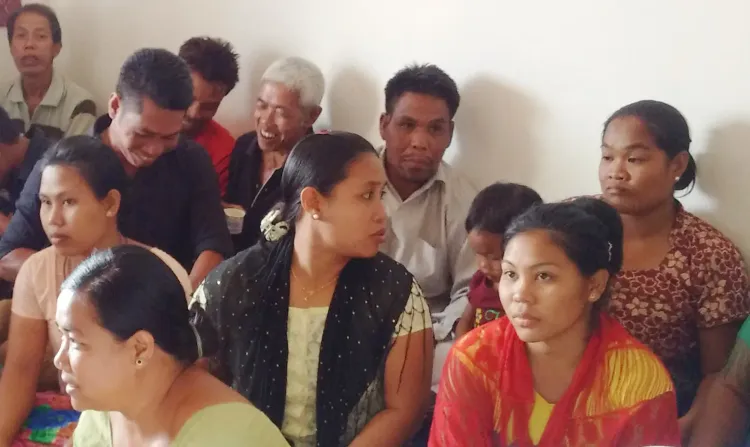Recent Genetic Study Reveals Austroasiatic Ancestry of Nicobarese

Hyderabad, Dec 6 (NationPress) A groundbreaking genetic study focusing on the Nicobarese has unveiled a strong ancestral link with Austroasiatic populations across South and Southeast Asia.
This research into the genetic background of the Nicobarese suggests that these islanders migrated to the region roughly 5000 years ago.
Conducted by a team of researchers from nine different institutions, the study was co-led by Dr. Kumarasamy Thangaraj from the CSIR-Centre for Cellular and Molecular Biology (CCMB) in Hyderabad and Prof. Gyaneshwer Chaubey from Banaras Hindu University (BHU), Varanasi. Their findings provide fresh insights into the genetic roots of the Nicobarese.
The statement released by CSIR-CCMB notes that the researchers performed an extensive genetic analysis utilizing DNA markers inherited from both maternal and paternal lines. This methodology allowed them to investigate the ancestry and genetic relationships of the Nicobarese with populations in South and Southeast Asia.
The results of this pioneering research have recently been published in the European Journal of Human Genetics.
The Nicobar Islands are located in the eastern Indian Ocean, south of the Andaman Islands. This archipelago includes seven major islands, such as Car Nicobar and Great Nicobar, along with many smaller ones, all characterized by flat terrain, coral reefs, and sandy beaches. The Nicobarese population is estimated to be around 25,000.
“Previous hypotheses indicated that the linguistic ancestors of the Nicobarese arrived in the Nicobar archipelago during the early Holocene, approximately 11,700 years ago. However, our recent genetic research involving 1,559 individuals from South and Southeast Asia shows a significant ancestral linkage between the Nicobarese and Austroasiatic populations,” stated Dr. Thangaraj.
The study particularly emphasized the genetic similarity between the Htin Mal community, a group on the mainland of Southeast Asia who speak an Austroasiatic language, and the Nicobarese. The Htin Mal have maintained a notable ethnic distinctness over time, exhibiting significant genetic drift from the Nicobarese.
“Genomic similarities across linguistic groups indicate an ancient spread of Austroasiatic populations in Southeast Asia,” remarked Prof. Gyaneshwer Chaubey, the lead author of the study. He added, “Our findings strongly suggest that the Nicobarese and the Htin Mal are crucial genetic indicators for understanding the ancient Austroasiatic heritage.”
“This research paves the way for a deeper understanding of the rich genetic diversity in Southeast Asia and emphasizes the need to preserve the cultural and genetic heritage of Indigenous groups,” said Dr. Vinay K. Nandicoori, Director of CSIR-CCMB.









